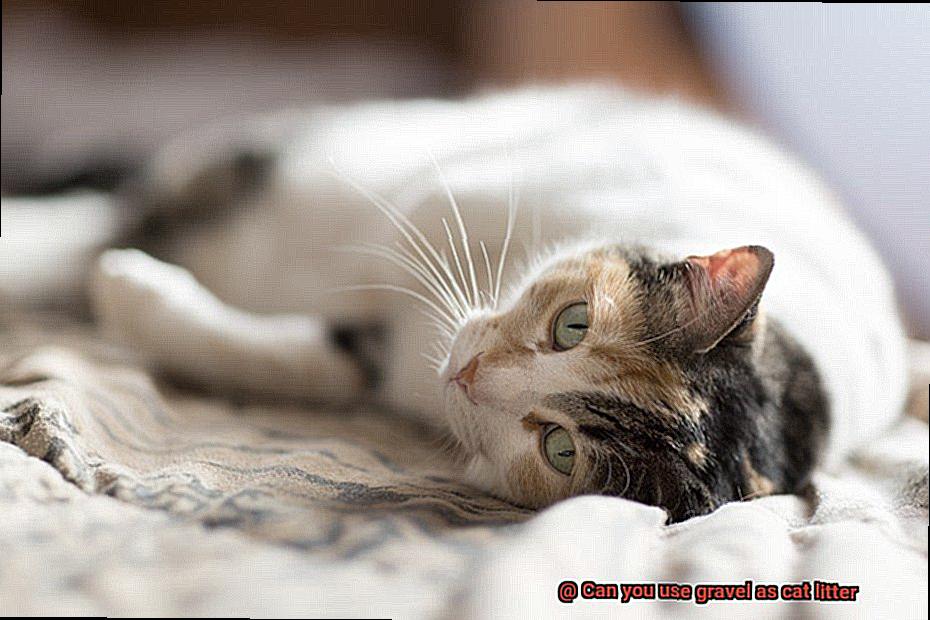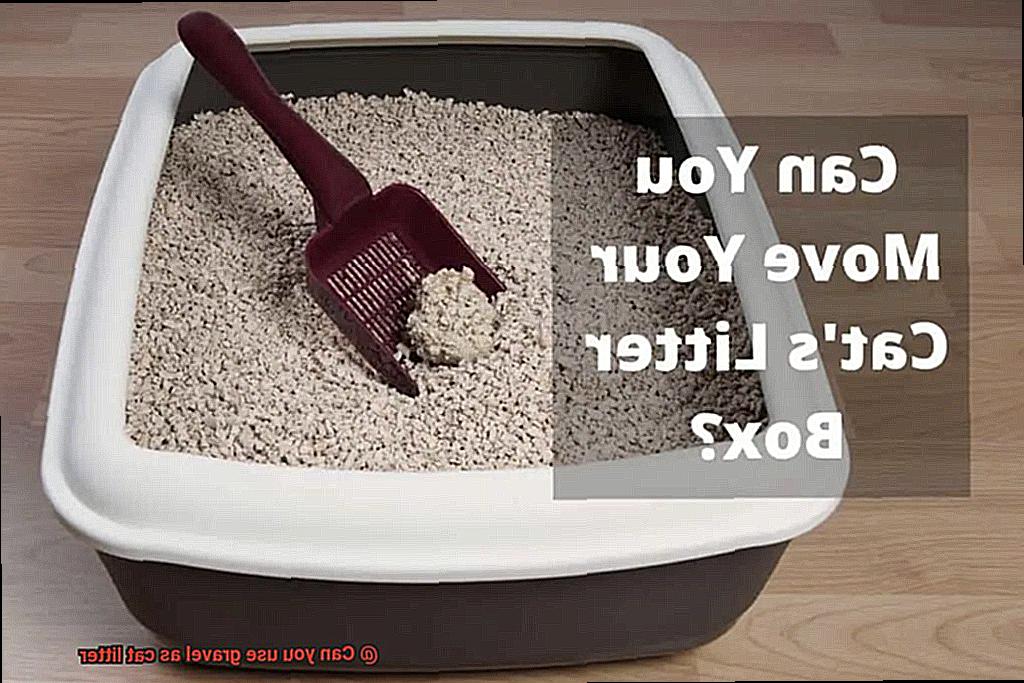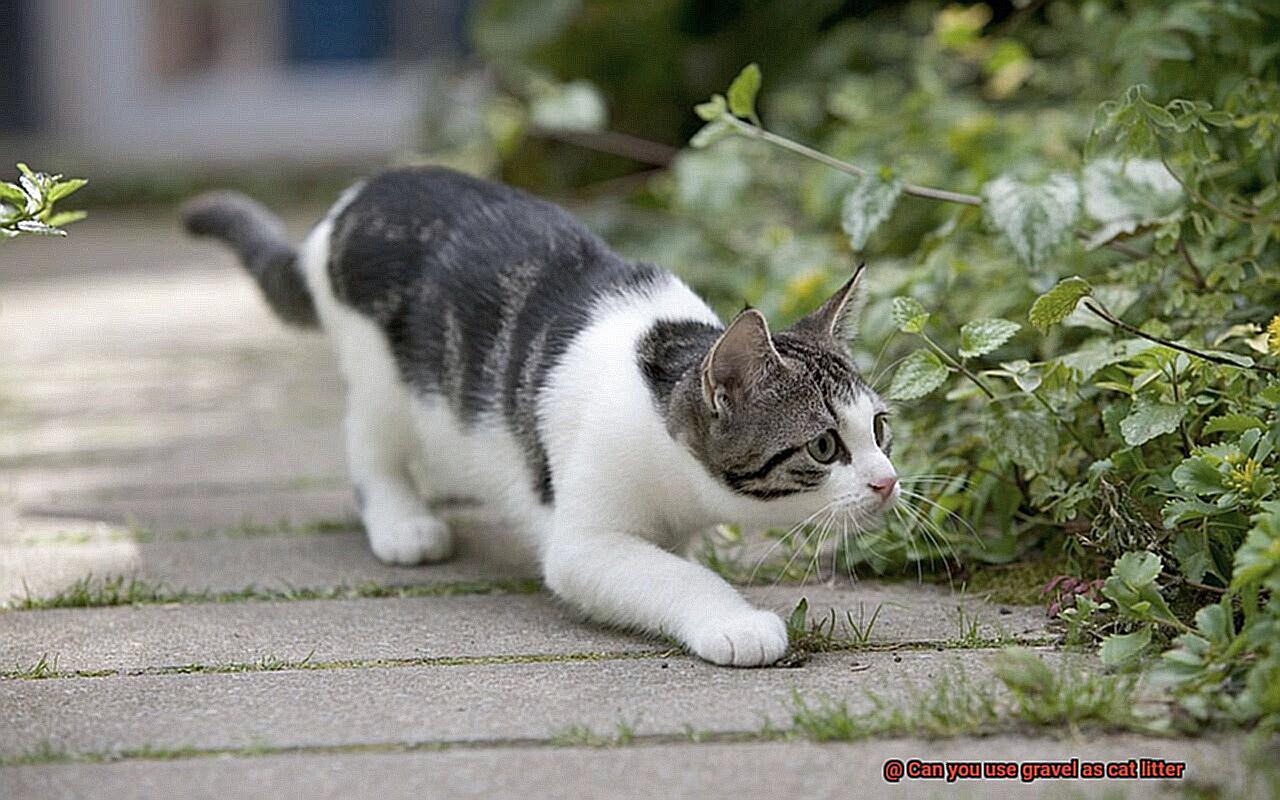As a devoted pet parent, finding the perfect cat litter for your feline companion is a top priority. With so many options available, making the right choice can be overwhelming. But have you ever considered using gravel as a cat litter alternative? Some pet owners swear by it, while others are skeptical.
Gravel has been used as a cat litter option for years due to its natural absorbent properties. It’s easy to clean, readily available, and can eliminate unpleasant odors. However, its rough texture may not be ideal for sensitive cats or kittens.
The big question is: Is using gravel as cat litter safe? Could it harm your furry friend? These are important questions that every pet owner should consider before opting for gravel as their go-to litter.
In this blog post, we’ll dive deep into whether gravel is a viable option for your cat’s litter box needs. We’ll explore the pros and cons of using gravel, what type of gravel is safe for your kitty, and answer some frequently asked questions about this unconventional cat litter choice. So buckle up and get ready to learn everything you need to know about using gravel as cat litter.
What is Gravel?
Gravel is a natural material that consists of small rock fragments in various shapes and sizes, ranging from small pebbles to larger stones. It is used widely for landscaping, construction, and as a base material for roads and driveways.

The composition of gravel typically includes a mix of minerals such as quartz, feldspar, and mica, combined with other materials like sand and clay. The exact composition can vary depending on the location it is sourced from.
One of the primary advantages of using gravel is its durability. It can withstand heavy foot traffic and last for many years without needing to be replaced, making it a low-maintenance option.
However, while gravel may seem like a cost-effective alternative to traditional cat litter, there are several factors to consider before making the switch. Some types of gravel may contain sharp edges or chemicals that can harm your pet, and the texture may be uncomfortable or even painful on their paws. Additionally, gravel does not have the same absorbency properties as traditional cat litter, which can lead to unpleasant odors and potential health risks for your cat.

To ensure the health and safety of your furry friend, it is recommended that you consult with your veterinarian before making any changes to their litter box setup. While some cat owners may find success using gravel as a substitute for traditional cat litter, it is important to consider all aspects of its texture, absorbency, and ease of cleaning before making the switch.
Is Gravel Safe for Cats?
Choosing the perfect litter for your feline companion can be a tricky task. While traditional cat litter is widely available, some pet owners opt for natural alternatives like gravel. But before you make the switch, you may wonder: is gravel safe for cats?
The safety of your furry friend is paramount, and it’s important to note that not all types of gravel are safe for cats. Some types may contain harmful chemicals or minerals that could be toxic to your cat, such as certain types of limestone gravel with high levels of calcium. This mineral can lead to urinary tract problems in cats, which can be painful and dangerous.

Another risk of using gravel as cat litter is injury. Sharp-edged particles can cause cuts or abrasions on your cat’s sensitive paws, leading to discomfort and potential infections. To avoid this risk, ensure that the gravel you use is smooth and doesn’t have any sharp edges.
Moreover, using gravel may not provide adequate odor control or absorbency compared to traditional cat litter. Gravel may not be as effective at trapping odors or keeping your cat’s litter box clean and dry. This could lead to unpleasant smells and health issues for your cat.
In conclusion, while using gravel as cat litter may seem like an attractive option due to its natural properties and low cost, it’s essential to weigh the potential risks and drawbacks before making the switch. Always ensure that the type of gravel you use is safe for cats, doesn’t have any sharp edges, and provides adequate odor control and absorbency. You should also consult with your vet before making any changes to your cat’s litter. Remember, your cat’s health and safety should always come first.
Pros and Cons of Using Gravel as Cat Litter
As an expert in the field, I’ve done extensive research on the pros and cons of using gravel as cat litter, and I’m here to share my findings with you.
First, let’s explore the pros. Gravel is a natural material that is easily accessible in most areas, making it an eco-friendly option. It’s typically less expensive than traditional cat litter options, allowing pet owners to save money. Furthermore, gravel is absorbent and can help control unpleasant odors, creating a more pleasant environment for both you and your furry friend. Its biodegradable nature also makes it easy to dispose of in the garden or compost bin.
However, there are some cons to consider when using gravel as cat litter. One potential issue is that it can be too rough and abrasive for sensitive cat paws, causing discomfort or even injury. This is especially important to keep in mind if your cat has any paw sensitivities. Additionally, gravel may not clump as well as traditional cat litter, leading to more difficulty during cleaning time. It can also track easily and create a mess around the house if not contained properly. Finally, it may not be as effective at controlling odors as other options.
Potential Health Risks with Gravel as Cat Litter
While using gravel as cat litter may seem like a practical and cost-effective solution, it actually poses potential health risks for your feline friend.
One of the major concerns with using gravel as cat litter is the presence of dust, dirt, and other harmful particles that can cause respiratory problems in cats. When cats inhale these particles, they can irritate their lungs and airways, leading to coughing, wheezing, and difficulty breathing. This can be especially dangerous for cats with pre-existing respiratory conditions.
In addition to respiratory problems, using gravel as cat litter can also be abrasive and scratchy, causing discomfort and even injury to your cat’s paws. This can lead to paw infections and other foot-related health problems if left untreated. Furthermore, gravel may not absorb urine and feces odor effectively, making it difficult to keep the litter box clean and hygienic for your cat.
Another potential danger of using gravel as cat litter is the possibility of containing chemicals or toxins that can be harmful to cats if ingested accidentally. Since cats are known to lick their paws after using the litter box, any harmful substances present in the gravel can cause gastrointestinal problems or poisoning in cats.
Given these potential health risks, it is crucial to choose cat litter that is specifically designed for felines. High-quality clay-based, biodegradable, or crystal litter is available in the market that meets cats’ needs and ensures their safety and well-being. Investing in such cat litter guarantees that your cat stays healthy and safe while also providing a comfortable and clean environment for them to do their business.
Cleaning Up After Your Cat with Gravel
While it may seem like a convenient and cost-effective solution, there are some important factors to keep in mind before making the switch.
Firstly, not all types of gravel are suitable for use as cat litter. Some types may contain harmful chemicals or be too abrasive on your cat’s delicate paws. It’s essential to choose a safe and appropriate type of gravel, such as river rocks or pea gravel, that won’t cause any health issues for your pet.
One advantage of using gravel as cat litter is its eco-friendliness. Choosing locally sourced and renewable options can reduce your environmental impact. Plus, it can add a unique and stylish touch to your home decor that traditional cat litter can’t match.
However, cleaning up after your cat with gravel can require more effort than traditional cat litter. Urine and feces can become trapped in the crevices between rocks, requiring regular cleaning and replacement to keep the area hygienic for your cat.
To clean up after your cat with gravel, scoop out any waste and dispose of it properly. Rinse the rocks with water frequently and replace them every few weeks to ensure they remain clean and safe for your pet.
Alternatives to Gravel as Cat Litter

While gravel may seem like an attractive option due to its low cost and availability, it’s not ideal for your cat’s needs. Not only can it be uncomfortable for them to walk on, but it also doesn’t absorb urine or control odors, making it unsanitary and unpleasant for both you and your cat.
Thankfully, there are several alternatives to gravel that are safer and more effective. One of the most popular options is clay litter, which is made from natural materials like bentonite or kaolin. It clumps together when wet, making it easy to clean and dispose of. Plus, it’s affordable and widely available in most stores.
If you’re looking for something lightweight and long-lasting, silica gel litter is an excellent choice. Made from tiny beads that absorb moisture and odors, this litter is not only effective but also cost-effective. It’s perfect for busy cat owners who want to minimize litter box maintenance time.
For those seeking eco-friendly options, plant-based litters made from corn, wheat, or recycled paper are becoming more popular. These litters are biodegradable and compostable, making them a sustainable choice for both you and the environment. They’re also gentle on your cat’s paws and free from harsh chemicals.
When choosing an alternative to gravel as cat litter, consider your specific needs and preferences. Cost, effectiveness, environmental impact – these are all factors that should be taken into account when selecting the right litter for your furry friend. With so many options available today, there’s no need to settle for gravel when there are better choices out there.

How to Choose the Right Type of Gravel for Your Cat

Gravel may seem like a natural and cost-effective alternative, but choosing the right type is crucial for your cat’s health and comfort. Here are 5 important factors to consider when selecting the right type of gravel for your cat’s litter box.
Size
Cats prefer smaller particles that are easier to dig through, so choose gravel that is between 1-2mm in size. Larger particles may not absorb moisture well and can be difficult for your cat to dig through.
Texture

The texture of the gravel should be smooth and not sharp. Sharp edges can hurt your cat’s paws, causing discomfort or even injury. Smooth gravel, on the other hand, provides a comfortable experience for your cat.
Absorbency
Highly absorbent gravel will help minimize odor and prevent bacteria growth. Look for gravel that has good absorbency properties to keep your cat’s litter box clean and odor-free.
Dust
Dust from some types of gravel can irritate your cat’s respiratory system, causing discomfort or even health problems. Choose dust-free or low-dust gravel to keep your home clean and your cat healthy.

Non-toxicity
Make sure the type of gravel you choose is non-toxic and safe for your cat to use. Some natural gravels may contain harmful chemicals or toxins that can harm your cat’s health, so always do thorough research before choosing any type of gravel for your cat’s litter box.
Suitable types of gravel that can be used as cat litter include crushed walnut shells, corn cob granules, and silica gel crystals. However, it’s important to note that some natural gravels may seem like a good option but could contain hidden dangers. Always research thoroughly and consult with your vet before making any changes to your cat’s litter box.
Tips for Transitioning from Traditional Cat Litter to Gravel
Transitioning from traditional cat litter to gravel can be a daunting task for both you and your feline friend. However, by following these tips, you can make the switch without causing stress or anxiety to your cat.
Gradual Transition
Cats are creatures of habit, and abrupt changes in their environment can cause discomfort. To avoid this, start by mixing small amounts of gravel with your cat’s regular litter. Gradually increase the amount of gravel over time until your cat is comfortable using only gravel. This way, your cat can adjust to the new texture without feeling overwhelmed.
Cleanliness is Key
Gravel litter requires more frequent cleaning than traditional litter. Ensure you clean the litter box at least once a day and replace the gravel every two weeks. This will prevent odors and bacteria buildup and keep your cat healthy.
Choosing the Right Type of Gravel
Not all types of gravel are suitable for cats. Look for non-toxic, dust-free, and unscented options. Some popular types of gravel for cat litter include crushed walnut shells, corn cob granules, and recycled paper pellets. Choose a type that is gentle on your cat’s paws.
Consider Your Cat’s Preferences
Every cat has unique preferences when it comes to litter. Observe your cat’s behavior during the transition period and adjust accordingly. If your cat seems uncomfortable or refuses to use the new litter, try a different type of gravel or mix it with their old litter.
Provide Enough Litter Boxes
Ensure you have enough litter boxes for your cats. As a general rule, there should be one extra litter box than the number of cats in the household. This will prevent any territorial issues or accidents when transitioning to a new type of litter.
LhgynG941D8″ >
Conclusion
In conclusion, while gravel may initially seem like a budget-friendly and natural option for cat litter, it’s essential to weigh the potential risks and drawbacks before making the switch. Despite its absorbent properties, gravel may not be suitable for cats with sensitive paws or respiratory problems due to the presence of dust, dirt, and other harmful particles. Furthermore, some types of gravel may contain sharp edges or chemicals that can harm your pet.
Fortunately, there are several safe and effective alternatives to gravel that are specifically designed for cats. Clay-based, biodegradable, or crystal litter options meet cats’ needs while ensuring their safety and well-being. When selecting any type of cat litter, consider factors such as size, texture, absorbency, dust level, and non-toxicity.
It’s crucial to make a gradual transition from traditional cat litter to any new type of litter to avoid causing stress or anxiety to your cat. Remember that your feline companion’s health and safety should always come first. Before making any changes to their litter box setup, consult with your veterinarian and choose a safe and appropriate type of cat litter that provides comfort and hygiene for both you and your furry friend.
Ultimately, by choosing the right cat litter option for your pet’s unique needs and preferences, you can ensure they stay happy and healthy while keeping your home fresh-smelling and clean.







